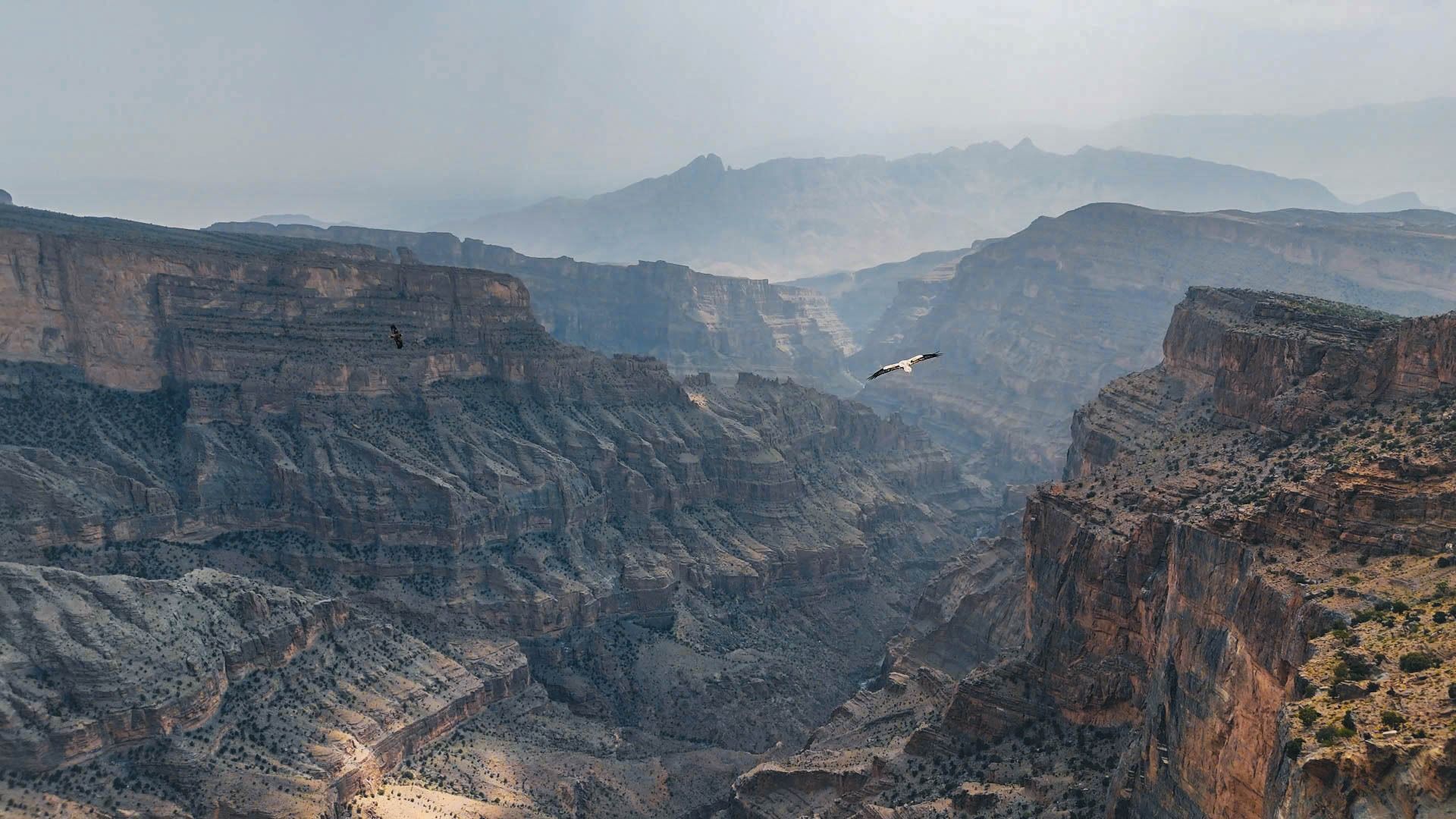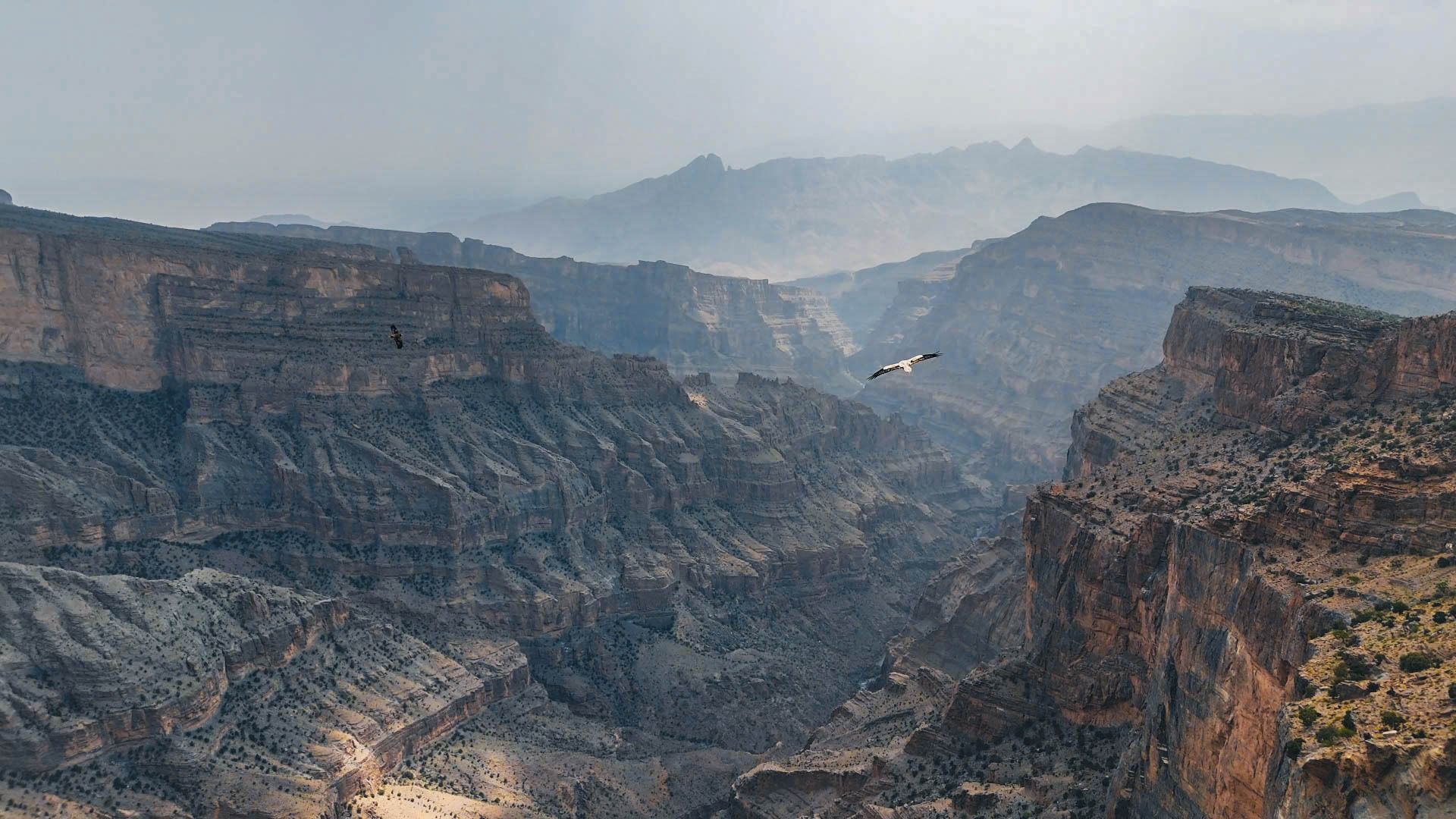
Oman is a country on the Arabian Peninsula, with its north coast facing the Gulf Coast of Oman, and its eastern coast lapped by the Arabian Sea. It's blessed with a number of diverse ecosystems, from the craggy Hajar Mountains to the undulating dunes of Wahiba Sands—and it’s gloriously underexplored.
“It’s still very uncharted, very virgin; one of the very few countries where you can literally go camping anywhere you like because it's safe,” says Victoria Schaal, who lives in Oman and works in adventure tourism.
One of the country’s top hiking destinations is Jebel Shams, which means ‘the mountain of the sun’. It’s called this because it’s the first place in Oman that the morning sun reaches, the highest peak in the country at 3,028m (9,934 ft).
It’s still very uncharted, very virgin; one of the very few countries where you can literally go camping anywhere you like because it's safe
Jebel Shams is located in the Hajar Mountains, a chain of rocky peaks in the northeast of the country. What makes it particularly spectacular is its view overlooking Wadi Ghul, known as the ‘Grand Canyon of Arabia’—a steep ravine that plunges nearly 1,000 metres (3,280 ft), making it the deepest canyon in the Arabian Peninsula.
There are a number of different hiking trails in the area, ranging from the Balcony Walk along the canyon rim, to the hike to the summit of Jebel Shams. In this guide, we’ll take you through the different options.
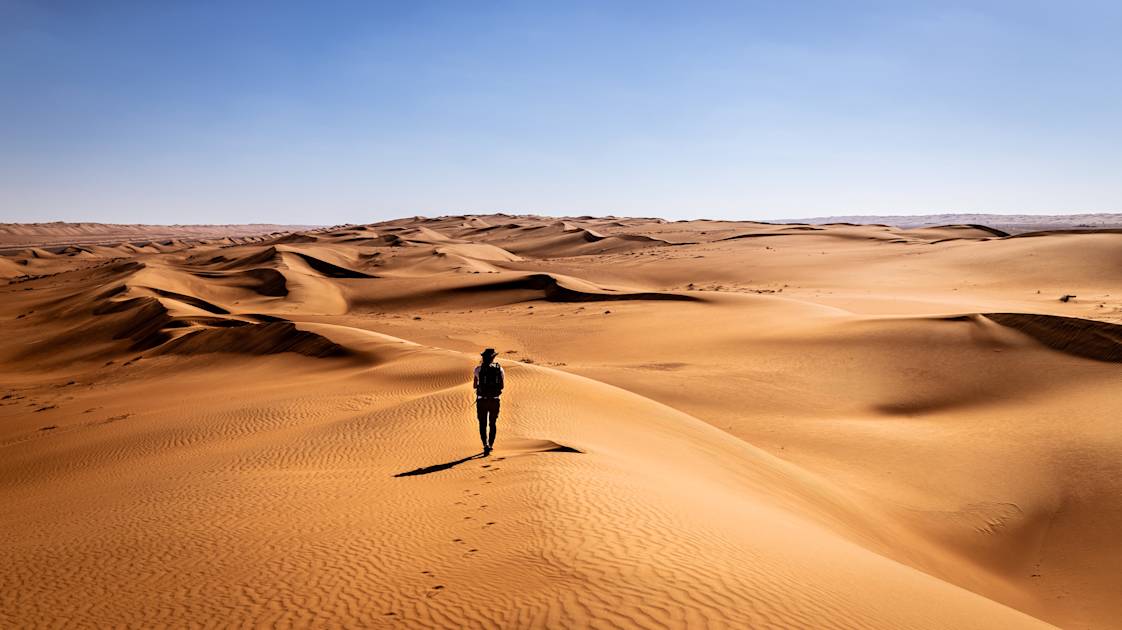
Where is Jebel Shams?
Jebel Shams is located in the Hajar mountain range in northeastern Oman, lying between 30-60 miles (50-100kms) inland from the Gulf of Oman.
“We divide them into the Eastern Hajar Mountains and the Western Hajar Mountains. Jebel Shams is in the west, where a lot of the higher peaks are,” Victoria says.
Jebel Shams is around 150 miles (240km) southwest of Muscat—a journey which takes approximately 3 hours and 30 minutes by car.
The Best Hikes in Jebel Shams
Jebel Shams Balcony Walk
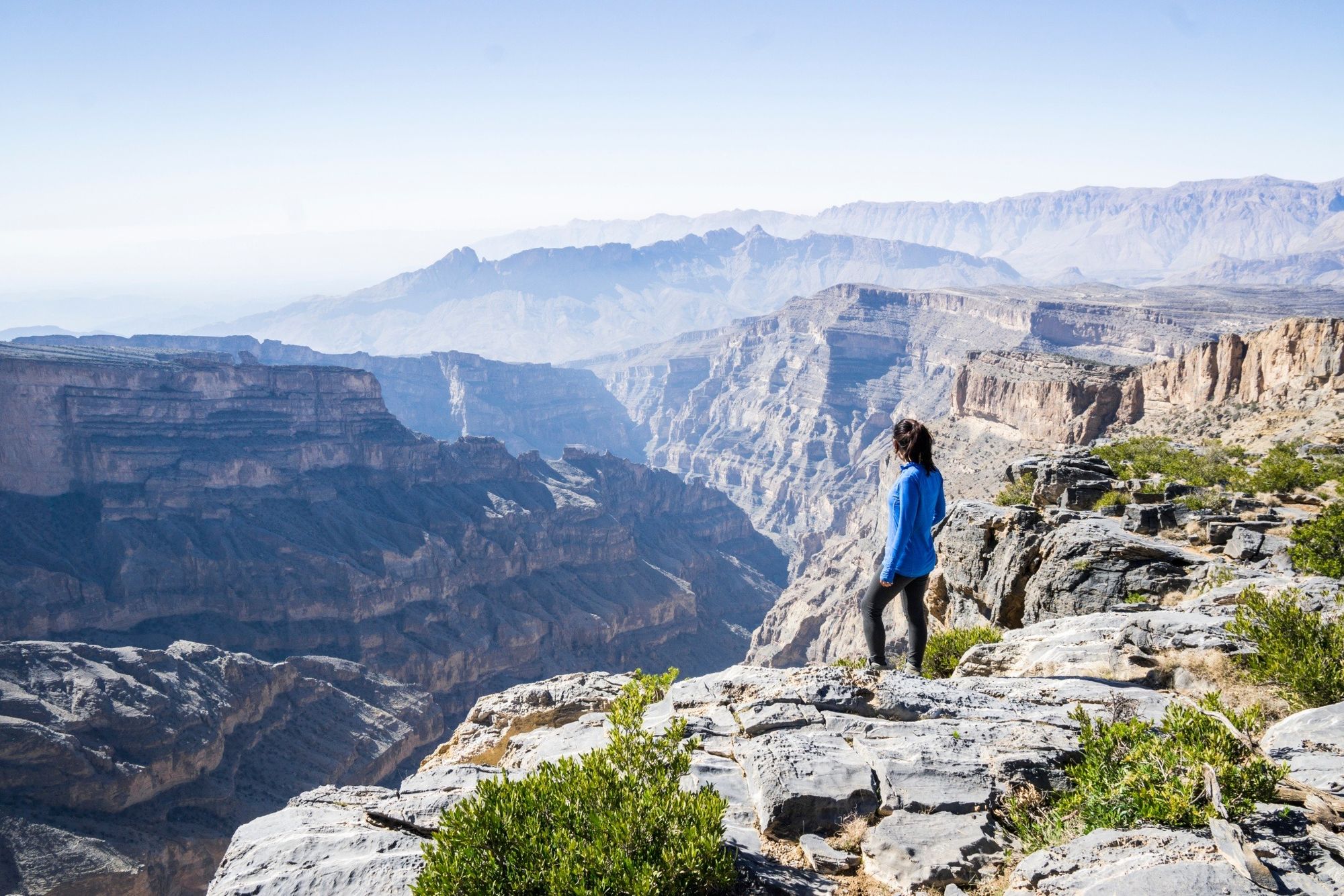
- Distance: 4.9 miles (8km)
- Hiking time: 4-5 hours
- Best for: views of Wadi Ghul
The Balcony Walk (W6) is the most well-known hike in Jebel Shams, skirting the rim of Wadi Ghul and offering panoramic views of the plunging limestone cliffs and high stone summit.
“It starts off the side of a local's house, and you start off descending a couple of rough stone steps,” says Victoria. “From then on, it’s a rugged trail. It’s only just wide enough for people to pass by shoulder to shoulder. This used to be a goat herders trail, and you’ll pass some disused houses. You can look inside, and there are Arabic signs explaining what they used to be, like a mosque or a kitchen.
“On your left side you have the mountain, so it’s completely protected. The right side is exposed, but where there are sheer drops, there's wires and fencing to protect people. Then you're basically hiking along this rugged terrain. You see canyon views all along.
You keep going downhill, until you have a short section where you have to scramble down using your hands
“You keep going downhill, until you have a short section where you have to scramble down using your hands. There’s about five minutes of that. Then you reach a hidden lake. It’s very reflective; you can see the mountains in it. There’s often a nice cool breeze, and it’s completely silent.”
After relaxing by the lake, it’s time to retrace your steps. This means you’ll be walking uphill for several hours. This is the most strenuous part of the hike, so it’s important to pace yourself.

Jebel Shams Balcony Walk and Via Ferrata Circuit
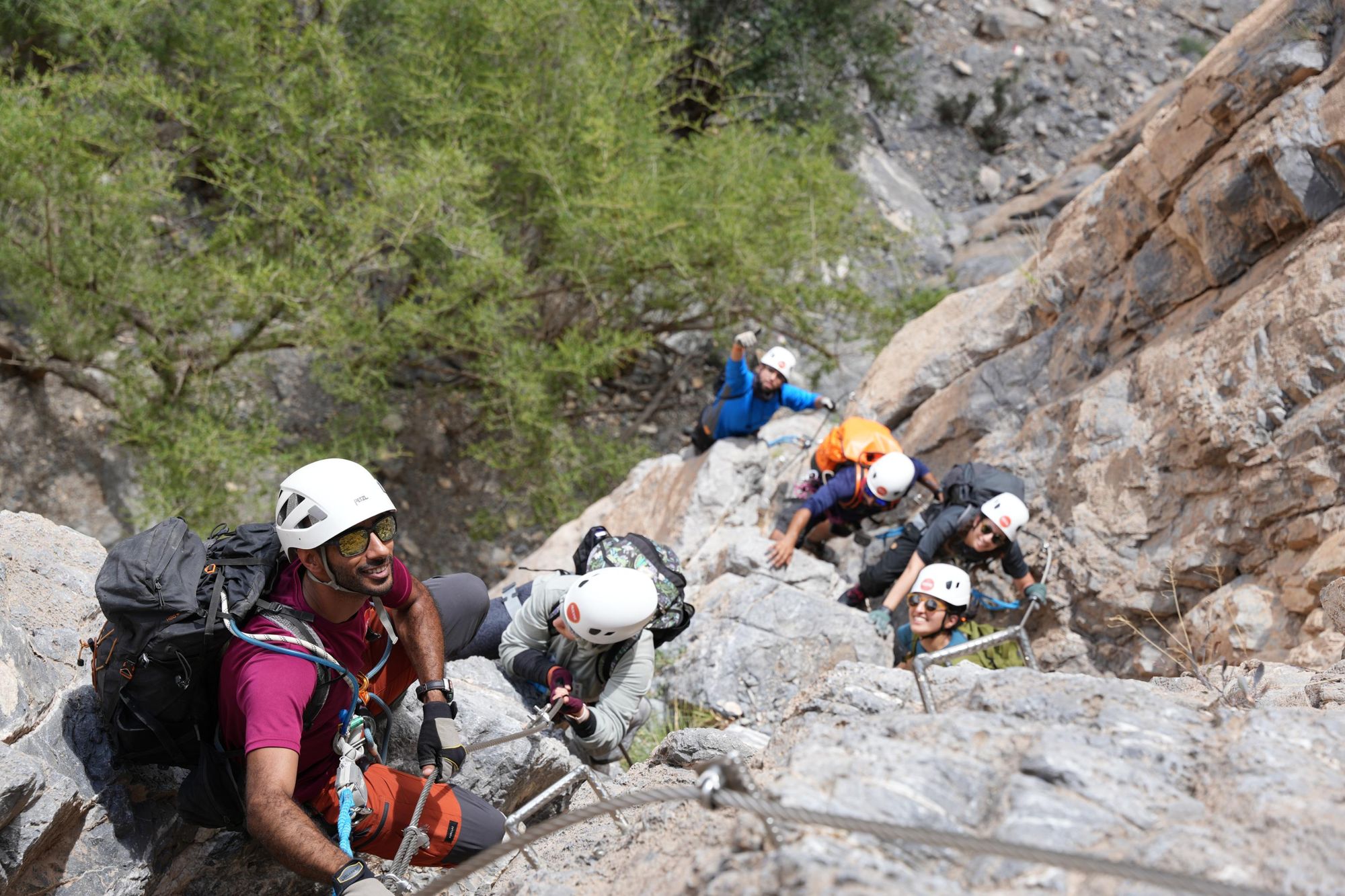
- Distance: 2.7 miles (4.5km)
- Hiking time: 4-5 hours
- Best for: anyone up for a challenge!
This might be the shortest hike on the list, but it’s actually the most challenging as it includes a 400m stretch of via ferrata. You’ll complete the first half of the balcony hike towards the lake. Then, instead of retracing your steps, you’ll ascend vertically up the steep canyon walls along a via ferrata.
“You kit up, you wear your harness, your helmet, and basically there are steel cables into the mountain. So, you're taking your carabiner, locking it into the next step, using your hands and legs to climb up to the next one, and then you make your way up the face of the mountain,” says Victoria.
“The via ferrata option requires you to be fairly fit, not afraid of heights, tall enough to reach the next steel cable—it isn’t suitable for children under 14. You also must do this with a guide.”
Jebel Shams Summit Hike
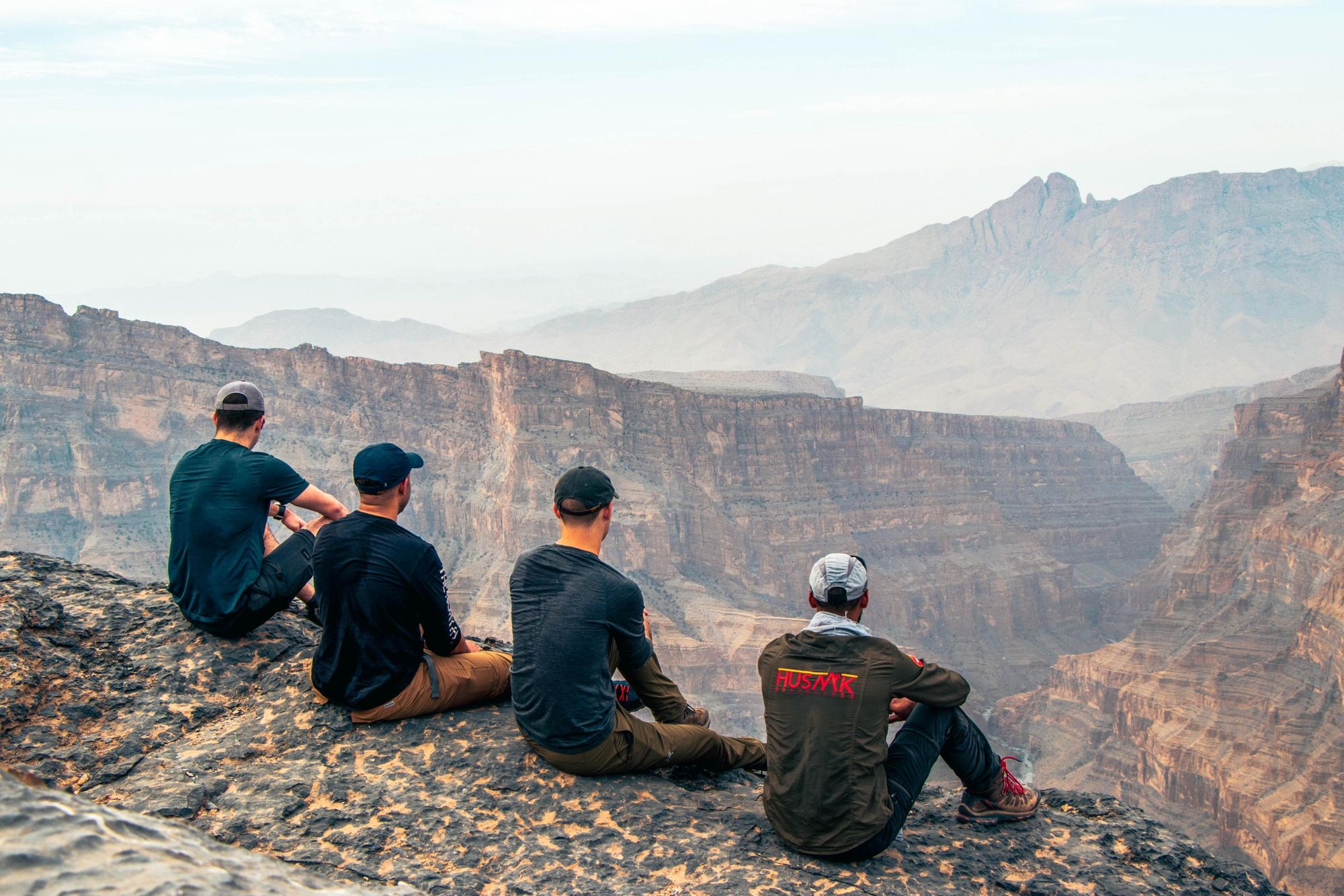
- Distance: 13.6 miles (22km)
- Hiking time: 7-10 hours
- Best for: summit baggers
Most hikers reach Jebel Shams summit along the W4 trail, which begins near Sama Heights Resort (and is demarcated by a stone painted with a yellow, red and white square). You’ll follow a dirt track, using the waymarkings to find your way across the rock. After that, you’ll have around seven miles (11km) of uphill climbing, intensifying as you draw closer to the summit.
“Some people like to do this as a single day hike, while others prefer doing it as an overnight hike,” explains Victoria. “If you do it as a day hike, you need to be camping or staying in a hotel in Jebel Shams the night before. So you have a 5 a.m start. You grab your day packs, you make sure you have enough water, some snacks and off you.
“As an overnight hike, you start later and on day one hike around five kilometres to a spot we call base camp one. You stay there overnight. The next day, you leave your equipment there and hike to the summit. You pick it all up on the way back and trek back to the start point.
“The views as you climb, and on the way to the top, are incredible. You can see Wadi Ghul, and different canyons and mountains around it. It’s common to see bald eagles and falcons soaring through the air as well.”
Where to Stay Near Jebel Shams
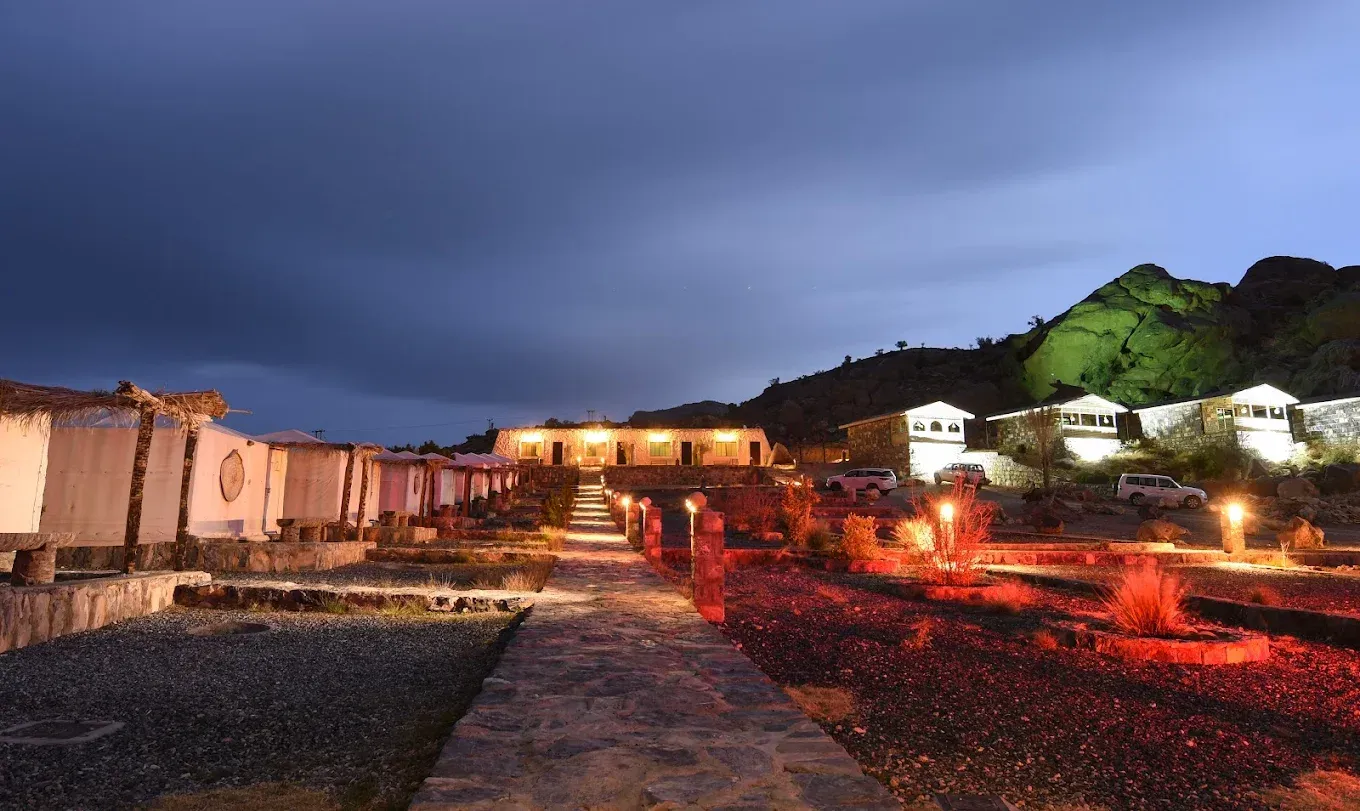
There are a number of accommodation options available near Jebel Shams. The closest hotel to the Balcony Hike is the Jebel Shams Resort, while the Sama Heights Resort is closest to the trailhead for the summit hike. In between the two lies the small village of Al Hayl, where you’ll find a number of different homestays and guesthouses.
There are also several different campsites in Jebel Shams, including Base Camp 1, on the way to the summit.
“We don’t advise camping during January, because it gets really cold at night,” says Victoria. “During the winter months you can still hike, but if you stay in a hotel you will be more comfortable.”

When to Visit: Weather and Seasons
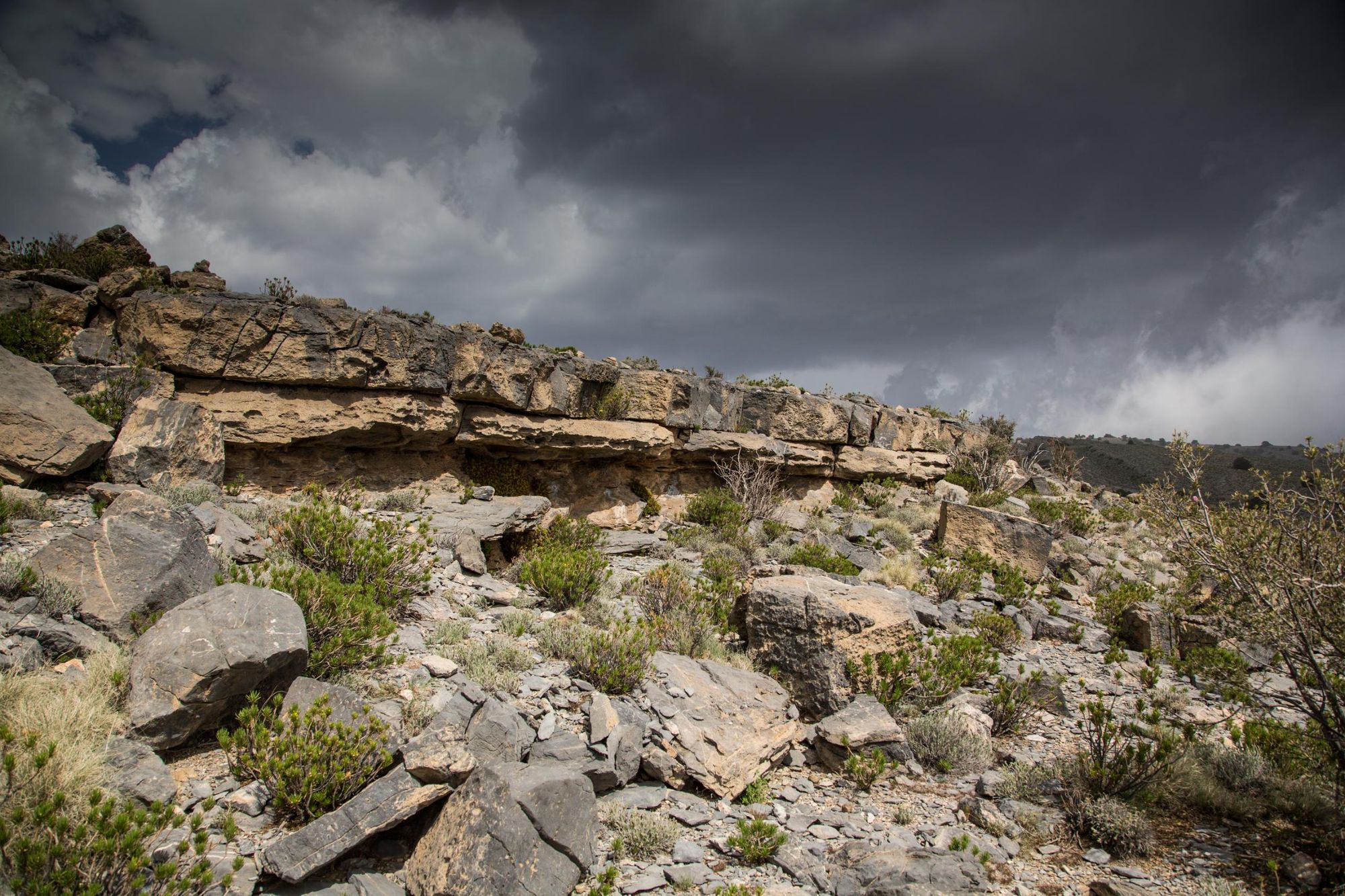
According to Victoria, Oman is a year-round hiking destination—although you do need to be adequately equipped for the weather conditions.
“The Balcony Walk is something we do all year round,” she says. “In the summer, we wait until later in the morning to hike it, when the path is in shade from the surrounding mountains.
“In winter the weather is a bit similar to the Italian Dolomites in summer—it can actually get pretty warm in the sun, you can hit 30-35 degrees, but the moment you're in the shadow with the wind, it can get pretty chilly. And then at night, it's another story. We wouldn’t recommend camping in January, because it gets too cold. But you can stay in a hotel and then you’ll be comfortable.”
In winter the weather is a bit similar to the Italian Dolomites in summer
The Jebel Shams summit can be hiked year round. However, as with the Balcony Walk, you need to be prepared to deal with heat in summer and steep temperature changes in summer.
“People underestimate how hot and rugged Oman is. Even in the winter you can get sweaty,” Victoria says. “We advise that anyone visiting the mountains travel with a guide for this reason. You also need to bring enough water for your trip, and in winter dress in layers, like an onion.”
Jebel Shams FAQs
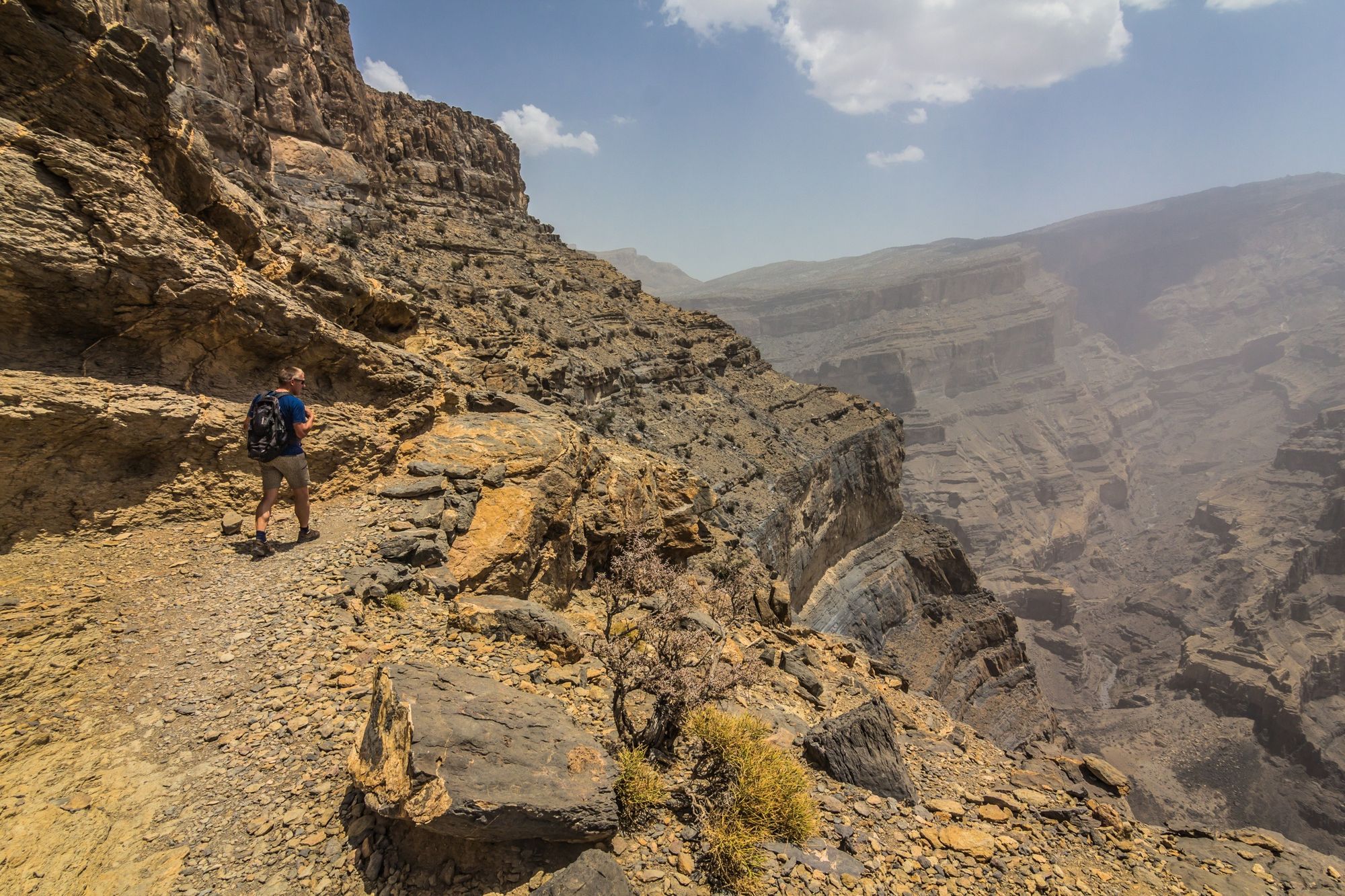
What is Wadi Ghul and why is it called the Grand Canyon of Arabia?
Wadi Ghul is a deep canyon in Oman, located near Jebel Shams, the country's highest mountain. It is called the Grand Canyon of Arabia because of its dramatic cliffs, 1,000-meter depth, and vast geological formations that resemble the Grand Canyon in the United States.
How do I get to Jebel Shams from Muscat?
To get to Jebel Shams from Muscat, drive southwest for about 240 km via Route 15 and Route 21. The trip takes 3.5 to 4 hours by car. A 4WD vehicle is recommended for the final stretch due to steep and rocky terrain.
Is the Balcony Walk on Jebel Shams difficult?
The Balcony Walk on Jebel Shams is moderately difficult. The 5.4 mile (8.7km) out-and-back trail takes you along a rocky trail, which is narrow and exposed in places. The route is entirely downhill, meaning you will be walking uphill on the return journey. It takes 4-5 hours to complete and requires good footwear and basic fitness.
Can you visit Wadi Ghul without a guide?
You can visit Wadi Ghul without a guide. However, using a guide is recommended, especially for those unfamiliar with hiking in the hot, rocky environment of Oman’s Hajar Mountains.

When is the best time to hike Jebel Shams?
The best time to hike Jebel Shams is from October to April. During these months, temperatures are cooler, ranging from 10°C to 30°C, making hiking conditions more comfortable. Summer months can be dangerously hot, especially in exposed areas along the trails.
Are there places to stay near Jebel Shams?
Yes, there are campsites, hotels and guesthouses near Jebel Shams. The closest resort to the Jebel Shams summit hike trailhead is Sama Heights Resort. The Jebel Shams Resort is the closest hotel to the Balcony Walk.
What other attractions are near Jebel Shams?
Attractions near Jebel Shams include Wadi Nakhr, the abandoned village of As Sab and the culturally fascinating town of Misfat Al Abriyeen.
Inspired? Hike the Balcony Walk on our Wild Oman: Journey Through Arabia adventure.


